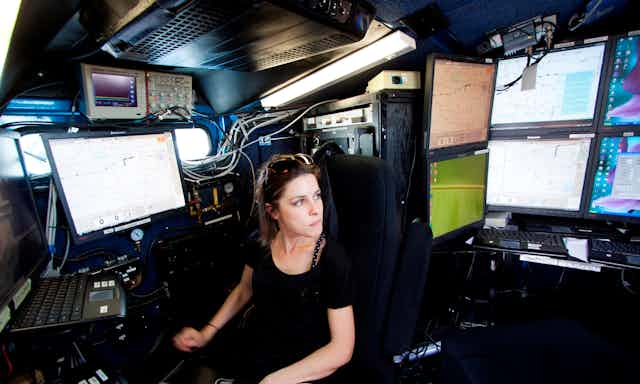Scientific infrastructure is big news. The Large Hadron Collider, based at CERN, has been a success not just in the field of particle physics, but as a scientific cultural icon.
The UK wants a piece of this success. The House of Lords Science and Technology Committee are currently running an inquiry investigating the state of the UK’s science infrastructure. This will establish whether there has been an adverse impact on UK scientific infrastructure from reduced Government investment.
The UK hosts some cutting edge infrastructure, including the DIAMOND light source, The Genome Analysis Centre, the HECToR national supercomputing service and the new Francis Crick Institute.
Good scientific infrastructure conjures visions of huge gleaming machines: the particle accelerators, next-generation gene sequencing machines and supercomputers. Behind the scenes, a very different type of infrastructure is needed to manage, store and analyse the data that these machines produce. That hidden infrastructure is software.
The Engineering and Physical Sciences Research Council estimates spending £9m a year on software development, but that is tiny in comparison to other forms of scientific infrastructure. Software is considered as a consumable. This is despite many examples of important scientific software being used, extended and maintained over a period of decades.
The Unified Model, used for weather and climate forecasting, was first developed in 1990. The GATE suite of tools for text mining and information extraction started out in 1995 (and is now available in cloud computing versions). Even the “new” rewrite of the widely used CASTEP software for calculating the properties of materials is nearly 15 years old. Far from being disposable, software is an enduring part of a scientific facility. It is a crucial part of the scientific infrastructure.
The House of Lords inquiry is looking at large to medium-sized equipment and e-infrastructure used to support scientific research. As part of this they seek to identify whether a suitable long-term plan is in place for the initial investment, use, operational costs and upgrades of scientific infrastructure. This is where the status of software is less clear.
Although software can be seen to have a similar lifespan to other infrastructure such as buildings and equipment, and much longer than the three to five years refresh cycle of computer hardware, it is difficult to fund its construction and maintenance. Neither pure research, nor pure facility, software falls between the gaps rather than bridging them.
To ensure that the UK’s scientific output continues to keep pace with its competitors, scientific software needs to be treated in the same way as other infrastructure. This isn’t as odd as it might seem. Scientific infrastructure, in government accounting terms, is defined as a capital asset used to deliver services to the research community with an initial life extending beyond one reporting period. Software fits this categorisation, and the parallels are clear: skilled engineers creating something to fulfil the long term needs of scientists. The fact that it lacks the physical presence of a building or box does not make it any less “concrete”.
However, just like physical infrastructure, software requires maintenance during its lifespan and it is this cost which is difficult to fund. The challenge lies in managing the maintenance and development of software as its use and users increase, and demands on its direction begin to diverge. Project management methodology (e.g. PRINCE2) can help address this challenge, but the sustainability of software depends on investment once it has reached the point of supporting a broad base of researchers.
Software is now a de facto part of the scientific infrastructure. The House of Lords Science and Technology Committee needs to recognise that just because it is difficult to attend the “opening” of a piece of software infrastructure, it is no less important to the impact of UK science.

